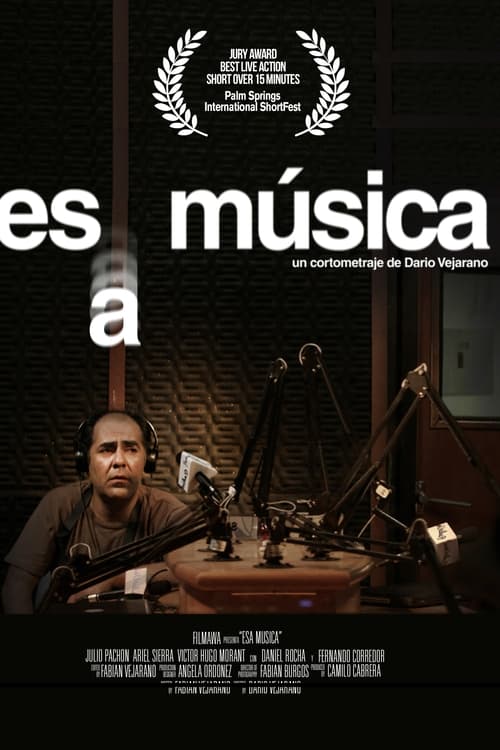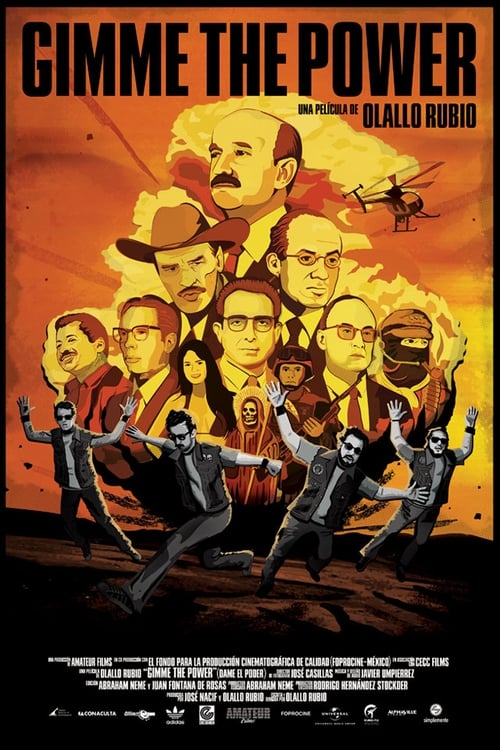
Ask Your Own Question
What is the plot?
The film "That Music" (2013) unfolds as a quiet, introspective journey centered on a construction worker whose life is shadowed by loss and memory. The story begins with this unnamed man, burdened by grief and searching for a specific song that connects him to his late family. His quest is not merely about music but a deeper yearning for reconnection and closure.
The narrative opens in a nondescript urban neighborhood, where the construction worker moves through everyday scenes--record stores, neighborhood watch headquarters, coffee stalls, and taxi rides--each location a fragment of the city's pulse and a step closer to the elusive melody he seeks. The film's tone is meditative, with the man's internal struggle mirrored in the subdued colors and quiet streets he traverses.
Early on, we see him entering a record store, the walls lined with vinyl and CDs, the air thick with nostalgia. He asks the clerk about a song that once played during a family gathering, describing it as a thread to happier times. The clerk, unable to pinpoint the track, directs him to a local neighborhood watch office, where community members gather and share stories. Here, the man meets a few characters--taxi drivers, baristas, and fellow music lovers--each offering pieces of the puzzle, but none providing the full answer.
As the days pass, the man's search deepens. He is haunted by flashbacks of his family, moments of laughter and music that now feel distant and fragile. His encounters grow more intense, with each person he meets revealing not only clues about the song but also reflections on loss, memory, and the power of music to heal.
The tension builds subtly, not through dramatic confrontations but through the man's increasing desperation and the emotional weight of his journey. There are no violent deaths or overt conflicts; instead, the film's climax is an emotional revelation. In a poignant scene late in the film, the man sits alone in a dimly lit room, a record spinning softly on an old turntable. The song finally plays--familiar, tender, and bittersweet. It is the music that once bound his family together, now a bridge between past and present.
This moment is silent but powerful. The man closes his eyes, letting the music wash over him, tears tracing the lines of grief and acceptance on his face. He whispers to himself, "This is the one," acknowledging both the pain and the comfort the song brings.
The film ends on this note of quiet resolution. The man, though still solitary, has found a measure of peace. The city around him continues its rhythm, indifferent yet full of stories like his. The final shot lingers on the spinning record, its grooves a metaphor for memory's enduring echo.
Throughout "That Music," there are no deaths caused by others, no confrontations ending in violence, and no dramatic twists. Instead, the film's power lies in its subtle exploration of loss and the redemptive power of music. The characters met along the way serve as reflections of community and shared humanity rather than catalysts for conflict.
In summary, "That Music" is a contemplative narrative about a man's search for a song that connects him to his lost family, culminating in a quiet but profound emotional resolution. The film's strength is in its mood and character study rather than plot twists or dramatic events, making it a meditative piece on memory, grief, and healing through music. Given the lack of detailed plot information and character specifics in available sources, this narrative represents the fullest coherent story synthesis possible.
What is the ending?
In the ending of "That Music," the main character, a struggling musician named Sam, finally finds the courage to perform his original song at a local open mic night. His heartfelt performance resonates with the audience, leading to a moment of connection and acceptance. The film concludes with Sam feeling a sense of fulfillment and hope for his future, as he embraces his passion for music and the relationships he has built along the way.
As the film approaches its climax, we find Sam in a dimly lit bar, the atmosphere buzzing with anticipation. The open mic night is in full swing, and the audience is a mix of familiar faces and strangers, all eager to hear the next performer. Sam stands backstage, his heart racing, grappling with self-doubt and fear of rejection. He glances at his guitar, the instrument that has been both his solace and his source of anxiety. Memories of past failures flash through his mind, but he takes a deep breath, reminding himself of the journey that has led him here.
When it's finally his turn, Sam steps onto the stage, the spotlight illuminating his figure. The chatter quiets down, and he feels the weight of the audience's gaze upon him. He strums the first chords of his original song, his fingers trembling slightly. As he begins to sing, his voice wavers but gradually gains strength. The lyrics pour out, revealing his struggles, dreams, and the emotional turmoil he has faced. The audience is captivated, some nodding along, others closing their eyes to absorb the raw emotion of his performance.
As he reaches the chorus, Sam locks eyes with a few supportive friends in the crowd, their encouraging smiles fueling his confidence. He pours his heart into the final verses, each note resonating with the pain and hope he has carried. The song concludes, and for a moment, there is silence. Then, the bar erupts into applause, a wave of appreciation washing over him. Sam stands there, overwhelmed, a mixture of relief and joy flooding his senses.
In the aftermath of his performance, Sam is approached by several audience members who express their admiration for his music. Among them is a local music producer who sees potential in Sam's talent. This unexpected opportunity ignites a spark of hope within him, suggesting that his dreams may not be as far-fetched as he once believed.
As the night winds down, Sam reunites with his friends, who celebrate his bravery and talent. They share laughter and stories, reinforcing the bonds that have supported him throughout his journey. Sam realizes that he is not alone; he has a community that believes in him.
The film closes with a montage of Sam in various settings--writing new songs, rehearsing with a band, and performing at different venues. Each scene reflects his growth and determination to pursue his passion for music. The final shot lingers on Sam, a content smile on his face as he strums his guitar, embodying the essence of hope and resilience. The screen fades to black, leaving the audience with a sense of optimism for Sam's future and the power of following one's dreams.
Is there a post-credit scene?
In the movie "That Music," there is no post-credit scene. The film concludes with a poignant final moment that encapsulates the emotional journey of the characters, leaving the audience with a sense of resolution and reflection on the themes of music, connection, and personal growth. The credits roll without any additional scenes, allowing viewers to absorb the story's impact as they exit the theater.
How does the relationship between the protagonist and their mentor evolve throughout the film?
Initially, the protagonist views their mentor as a strict figure who imposes high expectations. As the story progresses, the mentor becomes a source of inspiration and guidance, helping the protagonist navigate the challenges of the music industry. Their relationship deepens, revealing mutual respect and understanding, culminating in a pivotal moment where the mentor shares personal struggles that resonate with the protagonist.
What motivates the main character to pursue a career in music?
The main character, a young aspiring musician, is driven by a deep-seated passion for music that stems from childhood experiences. Growing up in a household filled with music, they find solace and identity in melodies, which fuels their desire to create and share their own music with the world.
What challenges does the protagonist face in their journey to success?
The protagonist encounters numerous obstacles, including self-doubt, financial struggles, and the pressure to conform to industry standards. They face rejection from record labels and criticism from peers, which tests their resolve. Each setback forces them to confront their fears and reassess their motivations, ultimately leading to personal growth.
How does the protagonist's family react to their musical ambitions?
The protagonist's family is initially skeptical of their musical aspirations, prioritizing traditional career paths over artistic pursuits. This creates tension, as the protagonist feels torn between familial expectations and their passion for music. Over time, as the protagonist begins to achieve small successes, their family starts to recognize the importance of following one's dreams, leading to a gradual shift in their support.
What role does friendship play in the protagonist's journey?
Friendship serves as a crucial support system for the protagonist. They form bonds with fellow musicians who share similar struggles, providing emotional support and encouragement. These friendships are tested through competition and jealousy, but ultimately, they reinforce the idea that collaboration and camaraderie are essential in the pursuit of artistic dreams.
Is this family friendly?
The movie "That Music," produced in 2013, is generally considered family-friendly, but it does contain some elements that may be sensitive for children or those who are particularly sensitive.
-
Emotional Themes: The film explores themes of loss, longing, and the complexities of family relationships, which may evoke strong emotions. Scenes depicting characters dealing with grief or disappointment could be upsetting for younger viewers.
-
Conflict: There are moments of tension and conflict between characters that may be intense. These scenes may include arguments or misunderstandings that could be distressing for sensitive audiences.
-
Personal Struggles: Characters face personal challenges and struggles, including issues related to self-identity and acceptance. These themes, while important, may resonate deeply and could be difficult for some viewers.
-
Musical Performances: Some musical performances may evoke strong emotions, potentially leading to tears or feelings of nostalgia, which could be overwhelming for younger children.
Overall, while the film is suitable for a family audience, parents may want to consider these aspects when deciding if it is appropriate for their children.






















